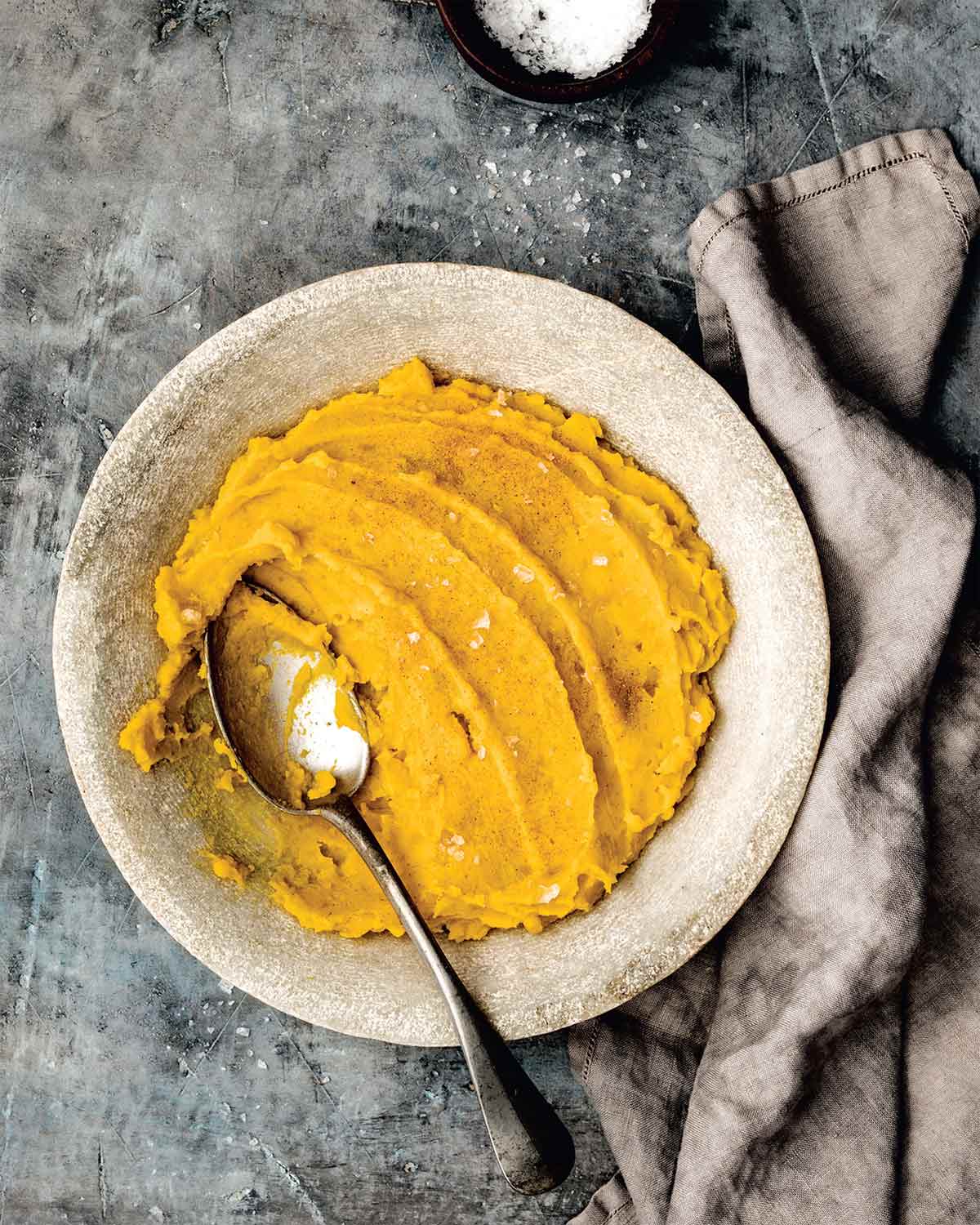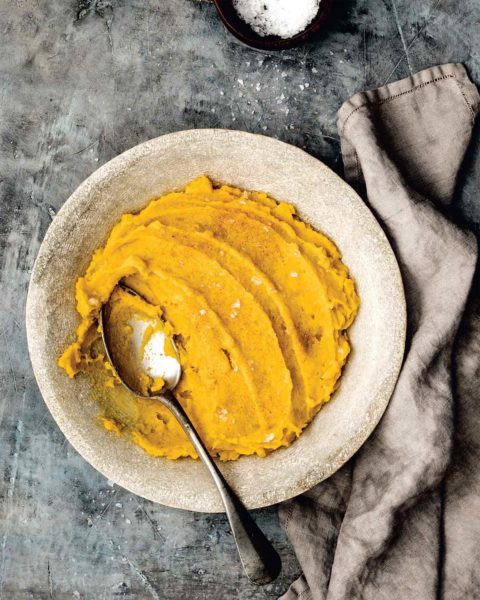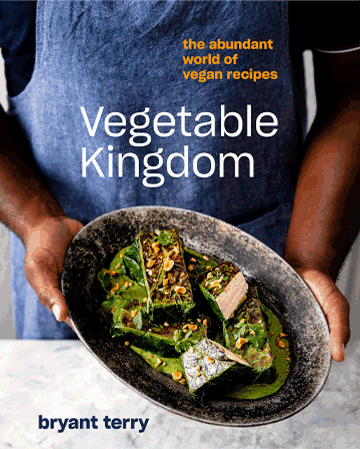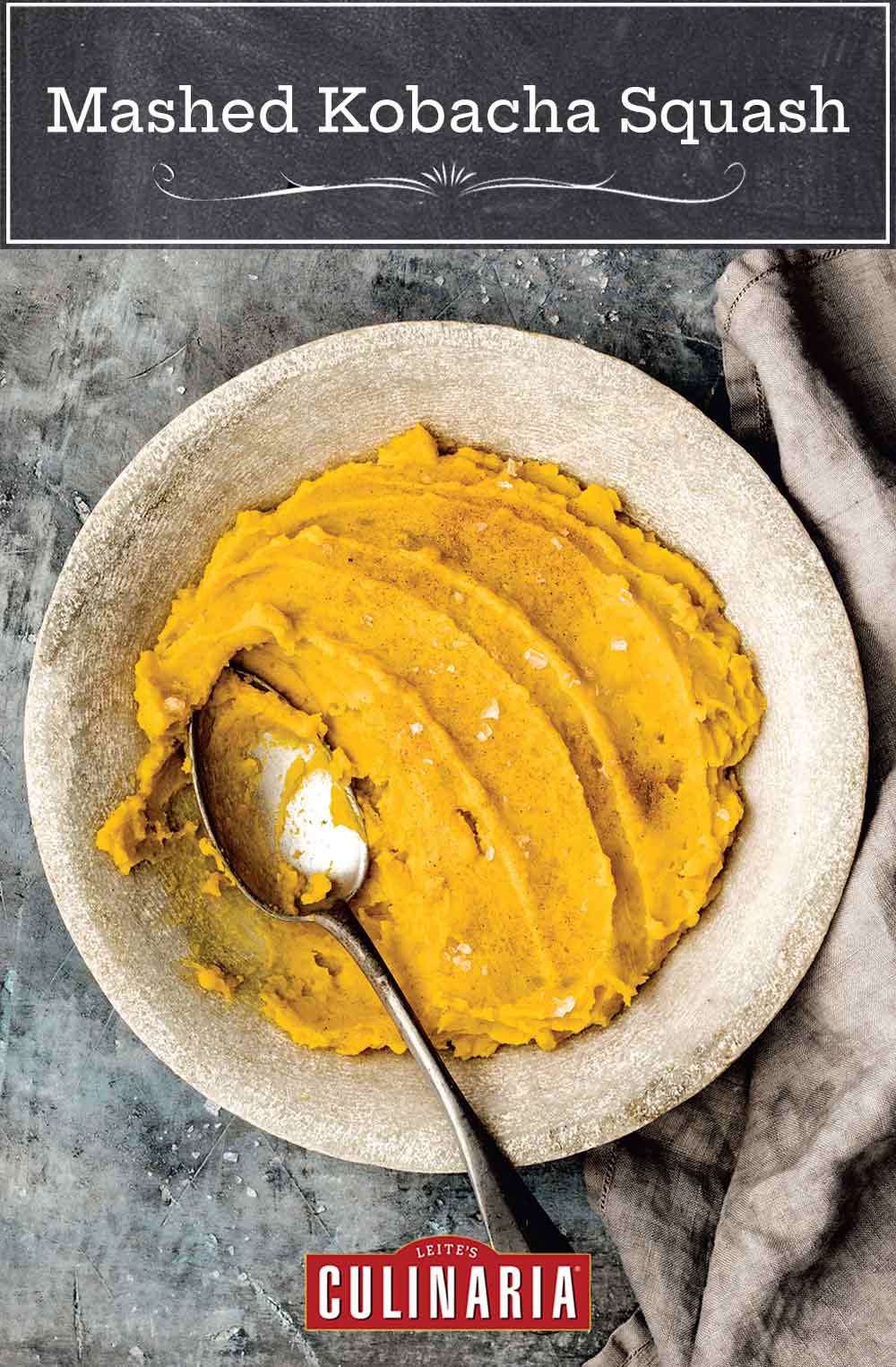
Sometimes doing less is more. Kabocha squash—or Japanese pumpkin as it is often called—has a sweet, earthy flavor and a lower water content than many other winter squashes, making it ideal for simple preparation like oven-roasting. In this recipe, I roast and then mash the squash along with coconut palm sugar, cinnamon, and oat milk for creaminess. While I mostly make this as a side dish, we sometimes have it for breakfast.–Bryant Terry
*What is a kabocha squash?
A tasty Japanese squash, kabocha is squat with a thin, dark green rind. It has a creamy texture and sweet flavor that tastes sorta like a cross between sweet potato and pumpkin. The thin skin can be cooked and eaten, too. Plus, it’s packed with beta carotene, iron and vitamin C.

Mashed Kabocha Squash
Ingredients
- One (1 1/2-pound) kabocha squash*, quartered
- 1 1/2 tablespoons coconut oil
- 2 teaspoons coconut palm sugar
- 1/4 teaspoon ground cinnamon
- 1/4 to 1 cup unsweetened regular or non-dairy milk, warmed
- Flaky sea salt
- Honey or maple syrup, for serving (optional)
- Toasted chopped almonds or pecans, for serving (optional)
Instructions
- Preheat the oven to 375°F (191°C).
- Remove the seeds and strings from the squash, reserving the seeds for another use. Arrange the squash on a rimmed baking sheet, cut-side up. Add enough water to reach 1/4 inch (6 mm) up the sides of the baking sheet.
☞ TESTER TIP: Toss the seeds in coconut oil and roast until golden. Enjoy as a snack or sprinkle over the finished dish.
- Cover with aluminum foil and bake until the squash is tender when pierced with a fork, 30 to 45 minutes. Remove from the oven and let the squash cool for 10 minutes.
- Using a spoon, scrape the flesh of the squash from the skin and transfer it to a medium bowl. Compost the skin.
- With a fork, mash the squash. Add the coconut oil, sugar, and cinnamon. While stirring with the fork, slowly pour in the milk and stir until the mixture is smooth and reaches your desired consistency.
☞ TESTER TIP: If the milk is not incorporating into the squash as well as you’d like, or you’d prefer a very smooth texture, use an immersion blender to puree it.
- Sprinkle with flaky salt, and drizzle with honey or maple syrup, if using. Top with the nuts, if desired, and serve.

Explore More with AI
Nutrition
Nutrition information is automatically calculated, so should only be used as an approximation.
Recipe Testers’ Reviews
Squash is a staple vegetable in my house, but I’ve never cooked with a kabocha squash. The subtle sweetness offers quite a refreshing change from your average winter squash, plus the texture was almost creamier and smoother. Overall, an easy dish with simple ingredients that’s perfect for a cozy dinner on a cold night.
If you like this recipe, I suggest changing up your type of milk (i.e. switch to almond or maybe even cashew?) and see how the subtle difference in flavor pairs with the mashed kabocha.
This mashed kabocha is like pumpkin pie filling for breakfast. Sweet, but not cloying, smooth and gently spiced. I was pleasantly surprised by how smoothly the pumpkin broke down as I mashed it—other varieties can be more stringy/fibrous and kabocha has a uniquely satisfying texture for this particular purpose.
This mashed kabocha is a simple, easy, and tasty side dish. My kabocha squash weighed in at 3.04 pounds, so I only used half. Next time I would just go with roasting all of the squash and spicing. As a side dish it was very nice, creamy in texture with a hint of cinnamon. It was a very tasty side dish to roasted pork.
Thirty minutes roasting had the squash fork tender. The coconut oil melted into the warm squash as did the coconut palm sugar. I warmed the milk in the microwave before adding it to the bowl and stirring it in. Next time I don’t know if I’d add the entire cup of milk, but would add it as needed to get that creamy texture.
I love the creamy texture of mashed kabocha squash and thought that a puree would be a great way to experience its unique texture. The preparation and ingredient list are very friendly for a beginner cook.
The end result was flavorful and creamy, but with two notable adjustments to the recipe as written. Cooking the squash took 45 minutes, 10 minutes longer than stated in the recipe. Also, when mashing the squash with a fork, the squash had a grainy texture and could not absorb the oat milk. Instead, I finished the squash with an immersion blender, which resulted in a velvety texture and which resembled the image of the recipe provided.
This mashed kabocha is so good that my husband let out an expletive after his first bite. I’m not kidding. He said, “**** that’s good!” And it is. This was our first time trying kabocha squash and we weren’t sure what to expect. Let’s just say, I’ve already gone out and purchased two more because I will be making this again.
The recipe is sweet, but not too sweet, and super creamy. We enjoyed it warm on the first day and cold on the second day. This could easily be a side dish, a breakfast, or a snack.
This mashed kabocha will be going into my fall rotation. It’s delicious and requires minimal effort to make. My only suggestion would be to start with half of the milk. Add more, if needed, to reach the consistency you desire. Oh, and don’t worry about putting the coconut oil in while it’s solid. It melts and blends in nicely.
This mashed kabocha is a really straightforward method that was new for me in cooking a winter squash, and specifically the kabocha, which are so plentiful now. (And honestly, I just don’t think to use them very often.) I planned on serving it as a side with roasted veggies and sausages, as well as trying it for a breakfast—so I had a chance to try it exactly as written, very plain, and then with some blueberries and walnuts the next day (quick reheating optional but a minute in the microwave worked perfectly).
The remaining serving has me thinking how much I wish I had a few Marcona almonds to sprinkle on top, serving it as a dessert pudding. By itself, the idea might be a bit underwhelming, but as a healthy and easy dish, I think this actually expanded my appreciation.
The timing was spot on for me, even though my squash was a bit larger than called for (I didn’t need to increase any of the other ingredients, and in fact only used about 3 1/2 ounces of the oak milk). Of course, individual kabocha will vary in how mature and moist they are, so you can easily adjust.
Although this recipe is written as vegan and friendly to healthy eating, I like that it expands my options when trying to eat a broader rainbow of vegetables and fruit, and actually could use so easily.














You know you like a recipe when, throughout the year, you anticipate the arrival of the season of the main ingredient. I made and reviewed this recipe last year and we’ve been talking about it since. There’s just something about it we love. It’s slightly sweet, a little earthy, and the color is stunning. We loved it for breakfast or as a snack. Super glad that fall has arrived. I saw kabocha squash the other day in my grocery store and immediately bought four. Guess what I’m making this weekend?!
That’s wonderful to hear, Jennifer. It’s so great to have a recipe like this one that you can look forward to all year.